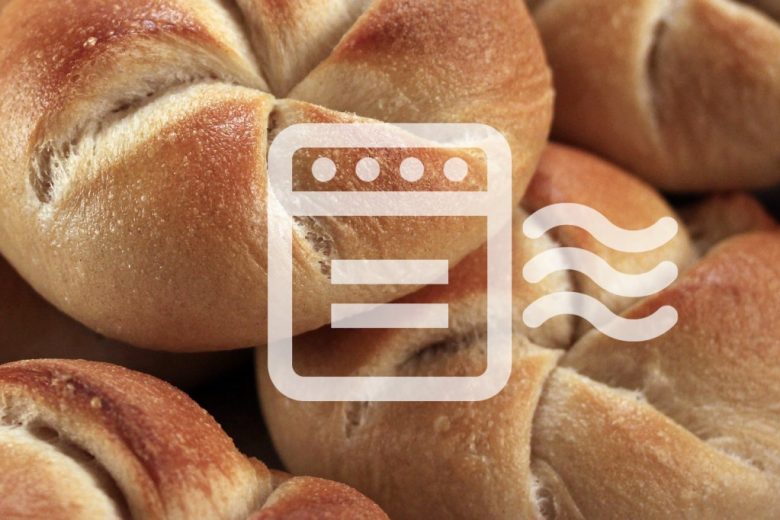Oven Steam- Part 2
By adding steam, a relatively large amount of heat is suddenly transferred to the surface of the dough. Condensation occurs between the temperature of the dough of approx. 30°C and that of the steam 100°C. As a result, the gluten proteins coagulate on the surface and release their water to the starch. The starch gelatinizes completely, and an elastic and gas-tight skin is created.
The generation of steam in the oven requires a relatively large amount of energy, so don’t overdo it!
Why should steam be added at all when baking:
Most types of bread require a sufficiently moist baking atmosphere for optimal oven spring. If there is insufficient moisture, a dry skin immediately forms on the surface of the dough, preventing optimal expansion.
- The surface of the dough should remain moist:
The hot steam hits the cooler surface of the dough pieces and condenses, i.e. a thin layer of water forms.
- The moist surface of the dough can expand from the internal gas pressure
The gluten remains easily movable even when it begins to solidify as long as there is enough water available to allow the movement and the gluten has not yet hardened. Thus, as a result of the oven spring, an increase in the volume of the baked goods can be achieved.
- The temperature increase on the dough surface is halted
The condensation water that forms on the surface of the dough is instantly converted back into steam by the baking heat, and the energy required for evaporation is withdrawn from the surface of the dough. The result is a cooling of the surface of the dough, which immediately leads to renewed condensation of steam to water.
By adding the steam, the following is achieved:
- The baked goods achieve a larger volume
- The crust does not crack
- The proper volume increase of the baked goods can be created
- Also the crust has a better shine from the moistening of the dough surface
The Steam amount depends on the:
- The level of proof of the dough:
– When barely proofed more steam – When fully proofed less steam
- The oven heat
– Ample steam in a hot oven – Minimal steam in a cooler oven
- The type of baked goods
– Ample steam for wheat breads – Less steam for breads containing rye flour
The retention time for steam:
- For high-gluten wheat rolls, the steam should remain in the oven for the entire duration of the baking process. Strong gluten hardens faster and more intensely when it coagulates. A large volume increase for the rolls can only be achieved by allowing the steam to take effect for a long time.
- Wheat bread needs less steam, but it should stay in the oven for the entire duration of the baking process.
- In the case of bread made from low-gluten wheat flours, but especially in the case of bread containing rye flour, the steam must be released after 60-180 seconds. Weak wheat gluten, but especially rye gluten, hardens more slowly and less. A sufficiently firm crust can only develop once the steam has been released.
- In the case of certain enriched breads, the steam must be removed earlier, otherwise the dough pieces would drift outwards. This is explained by the weakening of the glue due to the higher fat / butter content in the dough.
- If fully proofed, the steam should be let out earlier, since the dough has already developed enough internal gas. Once fully proofed, the dough weakens and it needs to form a crust quickly.
- If barely proofed, the steam is released later. Due to the proofing status there is a larger oven spring. The dough surface needs to remain flexible longer due to the firmed gluten (less mature dough).
Baking of Pretzel Bread:
In order to get an optimal smooth and shiny color on pretzel breads, they are baked without steam and with the drafts open during the baking time. The lye adhering to the surface of the dough would be diluted with the moisture from the steam. This would result in a dull, unsightly bread surface.


